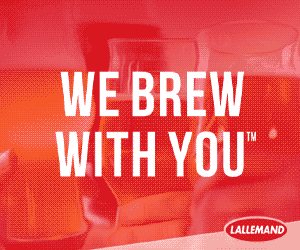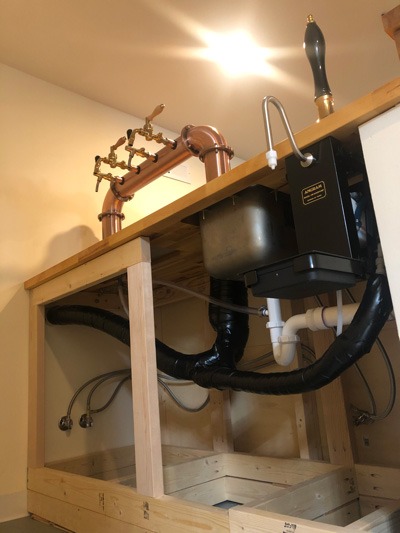Jacketed Mash Mixer
I believe a gentle mixing process helps loosen starch particles from grains making them more available to hydrolyzing enzyme action. In spite of clear evidence from commercial practice where mash mixers are used, there are certain problems I have found frequently associated in homebrewing literature with a stirred mash. Most often these problems relate to destruction of grain husks due to excessive mixing, mash hot side aeration (oxidation) and scorching of grains when the mash is heated by direct flame. However, all of these problems can be easily avoided.
To prevent scorching of grains it is important to add heat to the system in a controlled manner. The best way to do this is by applying heat indirectly, over a large surface. One way to do this is with an external electric heating jacket. In electric heaters, watts per square inch (WPSI) provides a measure of how gentle heat is applied to the system. In the world of electric heaters as used in RIMS systems anything around 50 WPSI qualifies as ultra low watt density (ULWD). Using a heating jacket, watt densities of 10 WPSI or less are available.
Problems regarding the destruction of grain husk and hot side aeration are directly related to the type of impeller/paddle used, impeller RPM and its location in the mash vessel. In terms of mash mixing, good performance means circulating the mash throughout the vessel fast enough to prevent stratification of temperatures but not aggressively as to cause splashing of wort and damage to grain husks. To achieve this, the mixer impeller needs to be located near the bottom of the mash tun, slightly off the center, and the blades need to be at least slightly pitched to force top to bottom circulation. An impeller speed less than 60 RPM is ideal.
This project is an electrically heated jacketed mash mixer tun incorporating some of the ideas mentioned earlier. For its use, the process starts by heating the strike water by direct flame at the bottom of the mash mixer tun. This mash mixer tun is a stainless steel pot retrofitted with a false bottom-dip tube assembly and a mechanical mixer in it. When water has reached the desired strike temperature, the propane burner is turned OFF and the mash mixer is turned ON (the mash mixer stays ON during the whole length of the mash process). The grains are added to the mash mixer where they are automatically blended and heated by an electric heating jacket. This heating jacket wraps the outside walls of the mash mixer tun and is turned on/off as necessary by a PID temperature controller to maintain constant temperature within 1 degree Fahrenheit (0.5 °C) or less.
Tools & Materials
(1) 8-gallon (30-L) stainless steel stock pot
(1)12VDC gear motor (from a truck windshield wiper system)
(1) PID Controller model E5CN Omron
(1) Electric heating jacket model WAD561001 from BriskHeat
(2) 3⁄8-inch stainless steel street elbows
(1) 3⁄8-inch x close stainless steel nipple
(1) Stainless steel false bottom
(1) Weldless valve
(1) Aluminum square tube and angle
(1) 14-gauge aluminum sheet metal
(1) On/off switch
(1) Fuse holder with 3-amp fuse
(1) Plastic box
(1) 12VDC Power supply with 6-amp rating





